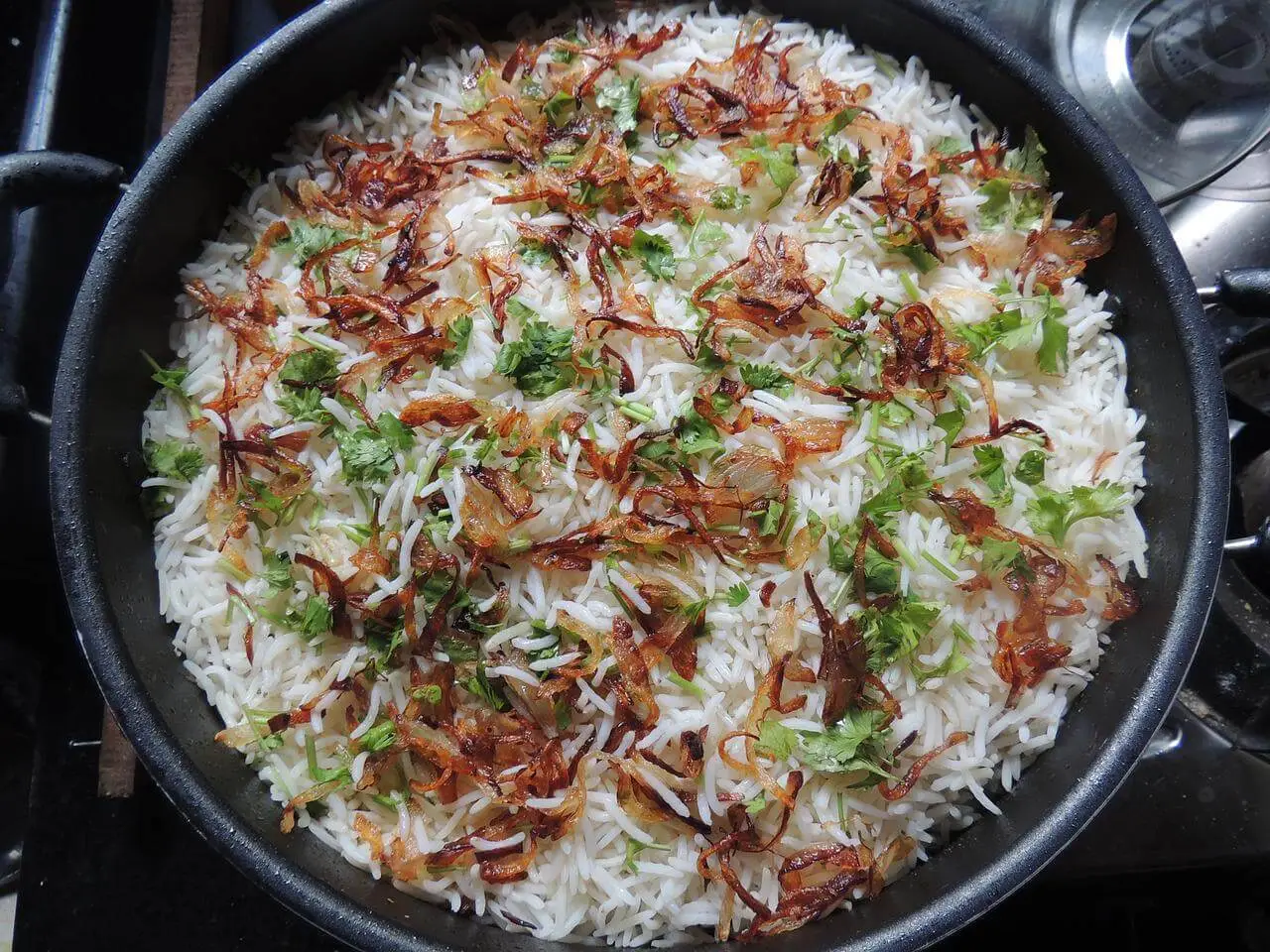Risotto gets a bad reputation for being a dish that is fussy to make, and difficult to perfect. However, reality, as is often the case in cooking, is a bit different. A recipe should not take you more than 30 minutes, and ideally, less than 20, if you have all the ingredients on hand.
These aforementioned ingredients tend to be the same for every risotto recipe, so once they’ve been prepped and are ready to go, the rest is a breeze.
That’s not to say you can add everything to the pan and just watch: risotto requires a splash of elbow juice and a bit of patience. But the reward is well worth it. Discover how to make Japanese style curry rice
The base ingredients for Risotto
Rice. White wine. Broth. Butter. Parmesan. These five key ingredients are the base to most traditional risotto recipes. You could feasibly try your hand at preparing a simple Parmesan Risotto, that wouldn’t require any other ingredient than those from this list. Let’s take a closer look at them and why they are elemental to what makes risotto so special.
The Rice
Did you know that risotto Arborio rice, the round, starch-rich eponymous grain is what brings risotto its distinctive creaminess. The supple grains release their starch gradually during the cooking process, thickening the broth and giving the risotto its unctuous texture.
It must be noted that this process is where the cook needs to put in a bit of effort, with constant mixing and adding the hot broth, never letting the risotto reach boiling temperatures.
Carnaroli rice is another alternative to arborio, and has the added advantage of being harder to overcook. Indeed, overcooked risotto tends to be pasty rather than creamy, which is a definite no-no. Discover our oven baked chicken and rice recipe.
The white wine
Your rice first must take a scorching flash bath in aromatic wine, which immediately evaporates the alcohol, and imbibes the grains with its flavour.
The embalming perfume of evaporated white wine is quite the experience in a home kitchen; we have to admit, it’s always a bit special when wine goes into a recipe. Having absorbed all the aromatics and complexities of your chosen wine, the rice keeps that layer throughout the cooking process.
The broth
Chicken or mirepoix broth. Or something else?
Some chefs like to use a light chicken broth, others go for a mirepoix broth (diced onions, carrots, and celery in boiling water). What matters is that the broth be laddled hot onto the risotto, as cold broth will cause a thermal shock. This blocks the starch from coming out while the rice continues to cook.
How to Cook Risotto to Perfection
As we saw previously, having the right ingredients on hand is essential. But once the prep is done, the steps towards a restaurant-level risotto are really quite easy. Risotto is not so much a dish – seeing as you can add whatever ingredients you may fancy – as a cooking technique.
Once you master that, all your risottos will be delicious.
First off, start with the soffrito, which entails softening finely cut onion and garlic in olive oil, before lightly toasting the rice in it. After having been coated in the now-fragrant oil, the rice gets doused in white wine. The sizzle and aromas coming from the evaporated wine is heavenly.
What may be the trickiest part of cooking risotto is knowing when it’s done. It may be one of the reasons why it’s such a restaurant favourite: clients pay for the chef’s know-how, namely knowing exactly when risotto is cooked perfectly.
Your risotto has to be creamy, yet not thick – how can you determine this texture? Run your spoon through the risotto in the pan, and it should roll back. Another way to know, as with most things “cooking” is by tasting. You want a soft texture, with an every so slight “bite” to it that signals it is still al dente. Creamy yet consistent: risotto perfection!
Serving and presentation
Risotto is a dish best served hot. It must not be left to cool as it will lose its creaminess. This is perhaps where some of its reputation as a fussy dish comes from, as it cannot be prepared in advance and reheated, as it loses its most distinctive feature, its texture.
The last two ingredients need to be added for extra richness and creaminess: the butter and Parmesan. Swirl both until thoroughly melted and get ready to enjoy.
So get a warm plate or bowl ready, ladle the desired portion, and sprinkle it with whatever tickles your fancy: chopped herbs, extra Parmesan (you can even try your hand at making Parmesan chips), even sliced truffles if you can get your hands on them. Enjoy without a moment’s wait.
It is worth mentioning that once you have the basics mastered, you can invent whatever risotto you want, by adding the ingredients you wish. Go for dried or fresh mushrooms, caramelized shallots, bell pepper, ribbons of spinach, chopped asparagus, slices of sausage, sun dried tomatoes, or any other combination of flavours that tickles your fancy.
Discover Dainty’s Risotto Recipes
- Rice Cooker Sicilian-Style Risotto
- West Coast Salmon Saltimbocca with Risotto
- Lemon Risotto
- Rice Cooker Chocolate Risotto








